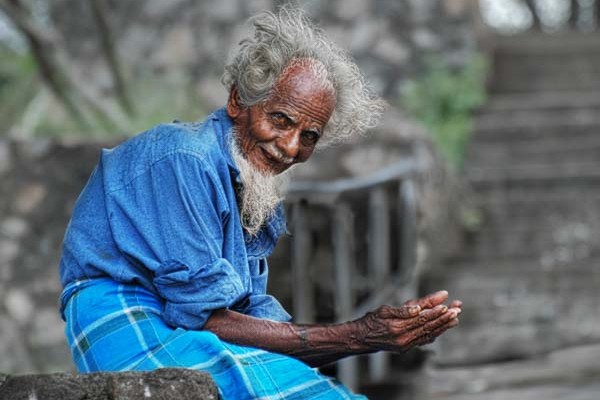Reasons Why Serbia Should Be Your Next Cultural Adventure
Explore the hidden gems of Serbia, a lively cultural hub in Europe. With a mix of Eastern and Western influences, Serbia is full of history and exciting traditions. This article will take you on a journey to show why Serbia, with its rich culture and history, is a great place for adventurous travelers. Experience the unique blend of stories, friendly people, and different cultures that make Serbia unique. This article will reveal why Serbia is a must-visit for culture lovers and curious travelers.

Historic Landmarks and UNESCO Sites
Start your adventure at the Belgrade Fortress, one of Serbia’s most famous sites, where the Danube and Sava rivers meet. This ancient fortress, dating back to the 1st century AD, has seen many battles and empires rise and fall, showcasing Serbia’s rich history. Today, it offers stunning views of Belgrade, attracting history lovers and travelers.
Also, the Studenica Monastery, founded in the 12th century by Stefan Nemanja, is known for its beautiful Byzantine frescoes and lovely architecture. Surrounded by lush landscapes, this peaceful monastery highlights the art and spirituality of medieval Serbia, taking visitors back to the time of the Serbian kingdom.
On the other hand, Gamzigrad-Romuliana, a palace built in the 3rd century by Emperor Galerius, shows Serbia’s ties to the ancient Roman Empire. As you walk through the remains of this grand palace with its walls, temples, and mosaics, you can feel the splendor of Roman history.
For a touching reminder of Serbia’s resilience, visit Niš Fortress and the Skull Tower. The Niš Fortress, an impressive 18th-century structure with Ottoman architecture and Roman artifacts, blends Serbian, Turkish, and Roman histories. The Skull Tower, built from the skulls of Serbian rebels in 1809, stands as a haunting yet powerful symbol of Serbia’s strength in tough times.
Local Festivals and Traditions
Serbia’s festivals are vibrant celebrations of its culture and history, providing a deep dive into this lively Balkan country. One of the standout events is the famous Exit Festival, held every year at the historic Petrovaradin Fortress in Novi Sad. Originally started in 2000 as a student protest against government policies, Exit has transformed into a major music festival, drawing over 200,000 people from all over the globe. With over 40 stages set against ancient walls, attendees can enjoy various music styles, including electronic, rock, reggae, and jazz, making it a true cultural hub.
Another popular event is the Guča Trumpet Festival in the village of Guča, celebrating traditional Serbian brass band music and attracting up to 600,000 visitors each August. Dubbed the “Woodstock of the Balkans,” this festival highlights Serbia’s rich musical traditions as lively brass bands fill the air, dance floors come alive, and locals and travelers immerse themselves in a high-energy cultural experience. Guests can savor traditional foods, see folk costumes, and dance in an atmosphere where Serbian customs shine.
Serbia is mainly known for its warm and welcoming attitude towards visitors, embracing people from all backgrounds. This friendly nature is supported by programs like the Serbia Citizenship by Investment, which attracts foreign investors by offering citizenship in return for significant economic contributions. This initiative helps boost Serbia’s economy and promotes cultural exchange, encouraging visitors to explore the country and become part of its vibrant community.
Dynamic Art and Literary Scene
Serbia’s art and literary scene is a lively blend of modern creativity and strong traditions. The capital, Belgrade, features vibrant art districts that showcase Serbian culture. One of the highlights is the Savamala district, known for its modern art displays and lively street art. Once an industrial area, Savamala has become a cultural center filled with art galleries, pop-up exhibitions, and colorful murals. Places like KC Grad (Cultural Center Grad) and Mikser House host various events, including art installations and underground music shows, bringing together local and international artists.
Book lovers can immerse themselves in a literary haven in Novi Sad, Serbia’s second-largest city and a UNESCO City of Literature. The town boasts independent bookstores, cozy literary cafes, and an annual International Book Fair that gathers Serbian and international authors, publishers, and readers in a warm and friendly setting. This recognition as a UNESCO City of Literature highlights Novi Sad’s dedication to preserving its literary heritage.
Serbia’s film and theater industry also plays a vital role in its cultural identity. Serbian films often explore historical, folk, and contemporary themes, reflecting the country’s rich past. Notable movies like “Underground” by Emir Kusturica have received international praise for their storytelling. Theaters in Serbia, such as the National Theatre in Belgrade and Atelje 212, offer a range of performances, from classic plays to experimental works, showcasing the nation’s talent in storytelling and theater.

Traditional Cuisine and Culinary Experiences
Serbia’s food scene is a delightful journey of flavors rooted in tradition. Start your tasting adventure with ćevapi, the national dish of grilled sausages from a mix of minced meats served with fresh onions and flatbread. Another must-try is sarma, which consists of cabbage leaves stuffed with seasoned minced beef and rice, slow-cooked until tender. Don’t miss pljeskavica, a Serbian burger seasoned with Balkan spices and often topped with ajvar, a tasty red pepper relish.
Serbian drinks also add to this culinary experience. Serbian wines are becoming popular for their bold, fruity flavors, especially from the Fruška Gora and Negotin regions, which produce varieties like Prokupac and Vranac. To complete your meal, try rakija, a beloved fruit brandy made from plums, apricots, or grapes. Rakija symbolizes hospitality and is often enjoyed during gatherings to celebrate life and friendship.
For an authentic experience, visit the Zeleni Venac market in Belgrade. This lively open-air market is filled with fresh produce, cheeses, cured meats, and local honey, giving you a glimpse into the daily lives of Serbians and their cooking ingredients.
Dining in a traditional katana—a cozy Serbian tavern—is a must. Locals gather here for hearty meals, lively music, and the warm atmosphere of Serbian hospitality. Kafanas serve generous portions of classic dishes, often accompanied by live folk music, creating a festive vibe.
A Rich Mix of Different Cultures
Exploring Serbia’s cultural landscape shows a country where ancient traditions blend seamlessly with modern expressions. This vibrant mix includes lively festivals, innovative art, and delicious food. Each aspect gives a unique insight into Serbia’s identity, inviting curiosity and deeper understanding.
Serbia encourages travelers and culture lovers to discover its rich heritage, where every experience can be unforgettable. Whether enjoying trumpet music at Guča, tasting rakija or experiencing storytelling in a Belgrade theater, Serbia’s cultural diversity offers a beautiful chance to celebrate the human spirit.
EXPLORE SOMEWHERE NEW
BUY A PRINT
All photos on this site are available as limited edition fine art photographic prints. Please get in touch for sizes and rates.



